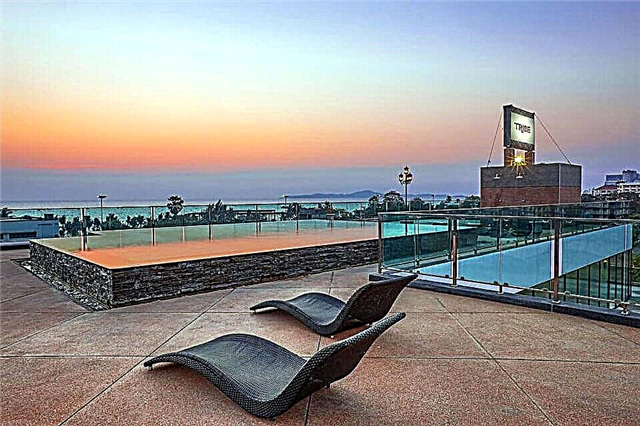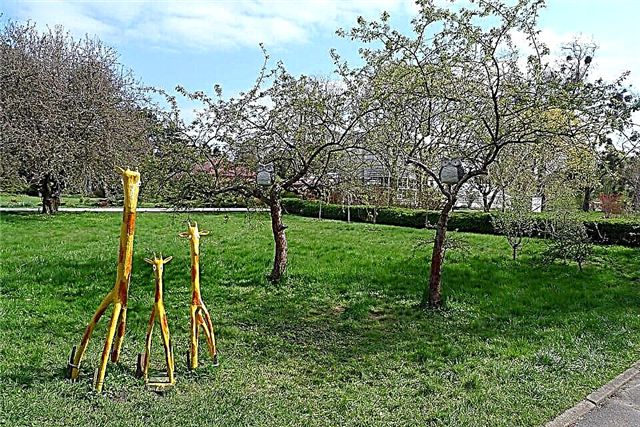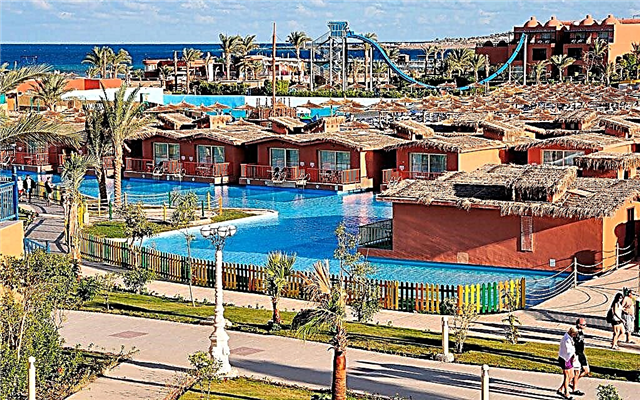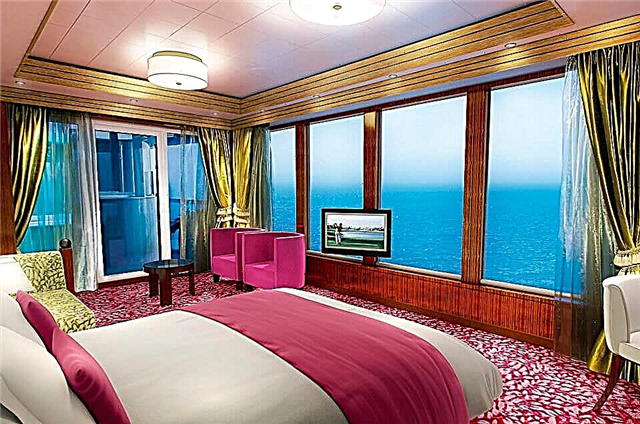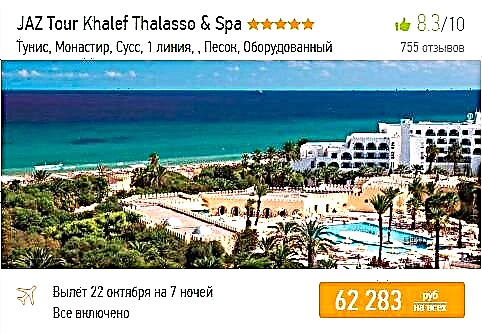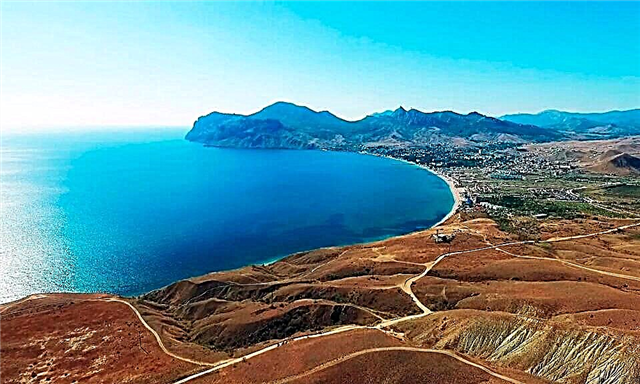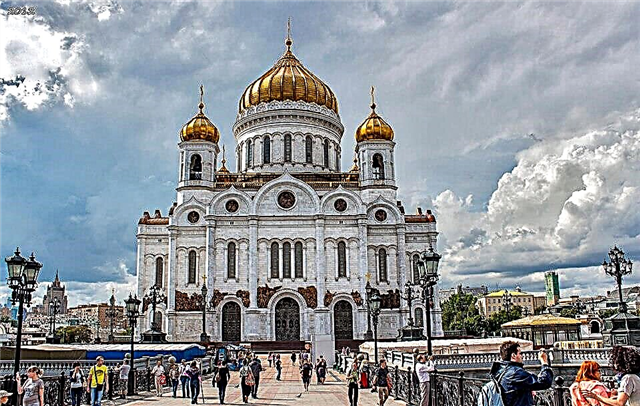Moscow is a majestic and multifaceted metropolis, where its legendary history is harmoniously intertwined with modernity. The city enchants and impresses with its monumentality of architectural ensembles and the unique atmosphere of landscaped streets, parks and squares rich in picturesque nature.
In the capital, there are so many interesting places, abounding in sights, that it is difficult to choose the most important ones within the framework of a short tour. A list of objects that are significant for viewing, compiled in advance, will allow the tourist to rationally take a walk and answer the question of what to see in Moscow in 2 days on his own.
First day
Most of the historical symbols of Moscow are concentrated in the center of the capital. These are the places with which the most important events of the state are associated, which determined the fate of a multimillion and multinational power. The first day of acquaintance with the capital should be started with the knowledge of its spiritual and cultural values.
The Red Square

One of the most visited and recognizable sights of Moscow is the world famous Red Square. This iconic place, located in the very center of the city, symbolizes the soul and heart of Russia. The square was founded at the turn of the XV-XVI centuries.
Initially, trade flourished in its vastness. Due to the proximity of river docks, goods were quickly delivered to the merchants' chambers, which were rebuilt several times after devastating fires.
Red Square received its official name after the decree of Tsar Alexei Mikhailovich in 1661. Over time, instead of shopping malls, the construction of various buildings began, which later became part of a unique historical complex.
Red Square, paved with cobblestones, includes majestic architectural ensembles included in the UNESCO list. These are St. Basil's Cathedral, Kazan Cathedral, Spasskaya Tower, Historical Museum, Mausoleum, Iverskie Gates, GUM.
Alexander Garden and the Kremlin

The Kremlin is a grandiose fortress that embodies the political power of the Russian state. Cathedrals, palaces and dozens of buildings rise behind the red walls with loopholes and Kremlin towers. Every corner of the territory is covered with the great history of the country. The residence of the President of the Russian Federation is also located here. At the foot of the Kremlin walls is the Alexander Garden.
This is a beautiful and well-groomed park, laid out in 1821 in accordance with the Tsar's decree on the restoration of Moscow after a fire during the invasion of the Napoleonic army. The territory of the wonderful garden is replete with alleys of tall trees, ornamental shrubs, fragrant flower beds and bizarre fountains.
Among the splendor of green spaces, monumental monuments and sculptural compositions attract attention. The alley made of granite blocks with the names of hero cities and "Eternal Flame" stands out.
Cathedral Square

The architectural center of the Moscow Kremlin is Cathedral Square. Its formation began in the first half of the XIV century. The great historical site is famous for the oldest churches in Russia, erected in different eras.
These are the Archangel, Annunciation and Assumption Cathedral, the Church of the Deposition of the Robe, the Patriarchal Chambers, the Ivan the Great Bell Tower and the Cathedral of the Twelve Apostles. White-stone masterpieces of true Russian architecture amaze with their beauty and grandeur.
The shrines keep centuries-old frescoes and icons, as well as the remains of the great princes from the Rurik and Romanov dynasty. You can see the skillful painting of walls and ceilings, a collection of forged and jewelry, as well as antique items of the royal household.
For over 500 years, Cathedral Square has witnessed many events. Here, solemn ceremonies of coronations, weddings of tsars, festive processions on the occasion of religious holidays took place, decrees were read and foreign delegations were received.
Cathedral of Christ the Savior

The main cathedral of the Russian Orthodox Church is located on the left bank of the Moskva River, not far from the Kremlin. This is the Cathedral of Christ the Savior, which is a true decoration of the capital of Russia. The shrine was erected in the 19th century by the vow of Emperor Alexander I in memory of the heroic victory over Napoleon's troops.
In the first decade of the formation of the USSR, the cathedral was blown up. The correction of the historical error was marked only in 2000. The temple was rebuilt on the model of the destroyed one.
The imposing building makes a strong impression on the parishioners. The height of the cathedral is 103 meters. In terms of the church, it looks like an equal-pointed cross 80 meters wide. The structure is crowned with five gilded domes, among which the middle one, mounted on a massive drum, stands out.
The facade of the cathedral is decorated with bronze high reliefs, medallions and sculptures depicting fragments of the history of Russia and the figures of angels.
Tretyakov Gallery

A visit to the famous Tretyakov Gallery should be a must on the cultural program of tourists in Moscow. The old and modest red and white building houses an extensive collection of works of art from different eras.
This is a large museum, where art canvases, sculptures and icons are displayed in numerous halls. It is here that you can feel the versatility of the talent of Russian artists who painted realistic vivid pictures.
Observing the imperishable creations of the masters, visitors to the gallery get acquainted with the amazing landscapes of Russian nature, the traditions of the Imperial Court, the nobility, merchants and peasants. Worthy of admiration and close attention, classic paintings, familiar to everyone since school.
These are "Three Heroes", "The Rooks Have Arrived", "Boyarynya Morozova", "Morning in a Pine Forest" and many others and canvases.
Museum of Fine Arts. A.S. Pushkin

In a cozy park, among tall fir trees, a picturesque building rises, which outwardly resembles an antique temple. A massive portico with Ionic columns and magnificent bas-reliefs adorn the façade of the building. Here is one of the largest museums of world art. Pushkin. The museum is famous for its unique exhibits of sculptures, paintings and applied arts. The expositions give a complete picture of the cultural development of civilizations of different peoples and eras.
In total, there are 30 thematic rooms with rich art collections. This is a rare opportunity to get acquainted with the valuable artifacts of the ancient Egyptians, Greeks and Romans. Here you can see paintings of medieval Europe, the countries of America, Asia and Africa, get acquainted with the masterpieces of the Renaissance and contemplate exquisite sculptural compositions.
Old Arbat
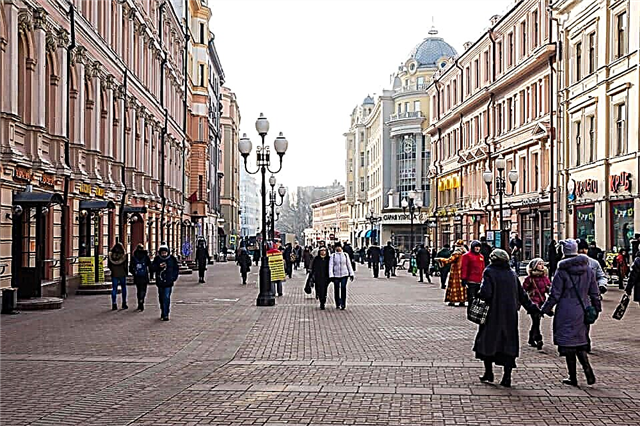
Arbat is one of the most famous and ancient central streets of Moscow. This is the soul of the city and the home of the creative intelligentsia. The avenue is a long pedestrian zone lined with small buildings, many of which are of historical value.
The facades of the house are impressive with a variety of architecture. You can see beautiful mansions with stucco and decorative elements, as well as simpler buildings. For a long time, merchants and artisans settled on the Arbat.
At the end of the 18th century, they were ousted by the nobles. It has become prestigious and fashionable to live here. Many noble personalities, such as N.V. Gogol, A.S. Pushkin, A.P. Chekhov, M. Saltykov-Shchedrin.
The street is popular with musicians, painters, actors and costumed animators. There are many cozy cafes, shops, souvenir and antique shops. Fairs and art exhibitions are constantly held. On the Arbat you can hear the reading of poems, the performance of folk songs and much more.
Second day
A myriad of tourists come to Moscow from all over Russia and the world. Amazingly beautiful places where you can have fun are located not only in the central historical part of the city, but also on its outskirts.
Walk along the Moskva River on a motor ship

The optimal and pleasant option for reviewing the main attractions of the capital of Russia is a river tram ride along the Moskva River.
Many shipping companies offer tourists to make an exciting journey for every taste and budget. You can choose a modern multi-deck liner, equipped with all the necessary conditions for comfortable sailing, or a speedy classic ship of the Soviet era without any frills.
Typically, each vessel has a lower deck with a bar and an open upper deck. During the cruise, an amazing view of the iconic places and objects of Moscow opens up from the sides.
Before the eyes of passengers appear the Kremlin with towers and domes of cathedrals, the Cathedral of Christ the Savior, the Monument to Peter I, the legendary Stalin skyscraper, a modern business center, Gorky Park, the monumental building of the Ministry of Defense of the Russian Federation.
Moscow City

The business district of the capital is located in the bend of the Moskva River. This is a complex of high-rise multifunctional and ultra-modern buildings of bizarre architectural form. The appearance of the structures is mesmerizing in size and ideas of ideas.
One can see flat, spiral, trapezoidal and sail-shaped structures, as well as towers with displaced cubes. The ambitious construction of Moscow City began in 1995. The skyscrapers house the offices of large Russian companies, shopping and entertainment centers, boutiques, many cafes, fitness rooms, medical centers, residential apartments and much more.
On the 55th floor of one of the towers there is a closed observation deck, where an amazing view of the historical center of Moscow opens from a bird's eye view.
Poklonnaya Gora

Travelers who came to Moscow from different cities and villages have long climbed a gentle hill in order to see the surroundings and express their respectful respect to the city. Since then, the place has been named as Poklonnaya Gora.
Today it is a favorite park of Muscovites and guests of the capital. Around the mountain there is a picturesque area, flowering flower beds, manicured lawns, beautiful fountains and a large walking area where you can retire and collect your thoughts.
First of all, Poklonnaya Gora is famous for its historical and cultural significance. On the vast territory of the park there is a memorial complex dedicated to the Great Patriotic War. Monuments, temples, museums, an exhibition of military equipment and engineering structures symbolize the heroic deed of Soviet soldiers.
The obelisk with a height of more than 140 meters inspires a special impression. A bronze figure of the goddess of Victory is fixed on it. At the foot of the monument there is a statue of St. George the Victorious, striking a dragon with a spear.
VDNKh

A popular attraction in Moscow is the Exhibition of Achievements of the National Economy. Since 1959, this cult popular place has enchanted more than one generation of Muscovites and guests of the capital. The ennobled territory of 520 hectares is occupied by a luxurious park with numerous pavilions, monumental structures, monuments, and entertainment facilities.
When entering the park through the majestic gate, you can see beautiful lawns and picturesque alleys. Noteworthy are two large fountains with sculptural compositions.
The first fountain is called "Friendship of Peoples", the second - "Stone Flower". The open-air exhibition complex offers visitors an educational walk. Each pavilion represents a unique architectural structure, the decorative elements of which reflect the culture of the peoples of the USSR.
At VDNKh, you can visit various exhibitions and museums dedicated to astronautics, history, scientific and technological achievements and other areas of human activity.
Ostankino tower

The development of television in the 60s of the last century required the construction of innovative structures. To cover long transmission distances, the signal transmitters had to be installed high enough. This architectural solution was the Ostankino Tower, which reaches a height of 540 meters.
This is a real miracle of design thought outwardly resembles an inverted lily flower. The main idea of the tower construction is that its base is many times heavier than the mast part.
The slender reinforced concrete "stem" consists of cylindrical steel links that gradually decrease in diameter.
The stability of the structure is provided by ten "petals" standing on the ground. The Ostankino tower houses television studios, an observation deck, and the Seventh Heaven restaurant, which revolves around its axis.
What else can you see
Despite the fact that Moscow is abundantly saturated with various buildings, more than a third of the city's area is occupied by park zones. These are unique natural and historical landscapes where you can see the ancient estates of kings and nobles. In every district of Moscow there are green oases with refined recreational areas.
Tsaritsyno park

The Tsaritsyno Palace and Park Museum Reserve transports tourists from the bustle of the capital to the epoch of the 18th century. On a hilly scenic area, cut by ravines and a pond, among the southern microdistricts of Moscow, a bizarre architectural ensemble is located.
This complex of majestic buildings and structures in the pseudo-Gothic style was erected at the behest of Empress Catherine II in 1776. Almost all buildings used a combination of red brick with white stone.
The territory of the park is quite extensive. Most of it is covered with forest. There are many trees, luxurious alleys and mirrored ponds. Walking along the paths, you can see man-made sights. These are pavilions-gazebos with graceful columns, rotundas, towers, statues and delicate bridges.
The pearl of Tsaritsyno Park is a large palace framed by manicured lawns and flower beds. The mansion's façade is decorated with pilasters, spiers, arched galleries and fancy decorative ornaments.
Kolomenskoye Estate

A popular tourist destination is the Kolomenskoye Estate Museum, located on the high bank of the Moskva River, 14 kilometers from the Kremlin. For a long time, this territory was considered the royal patrimony, where today historical architectural monuments have been recreated or reconstructed.
It was the favorite residence of Tsar Alexei Mikhailovich, who spent his leisure here and hosted guests. The manor park is spread over 242 hectares of land. There are old snow-white churches, pavilions and peasant houses. The main attention should be paid to the masterpiece of Russian architecture - the marvelous tower-palace.
This is a copy of the original mansion, restored according to the saved diagrams and drawings. The Tsar's Tower has a strikingly colorful façade. Painted carved window frames, colored stained-glass windows, patterned turrets, amazingly shaped roofs and delicate wood carvings are impressive.
The palace consists of over 200 chambers. You can see the sovereign's private mansions, his study, throne room, refectory and even a bathhouse. Kolomenskaya Estate recreates the atmosphere of the 17th century.
Manor Kuskovo

The summer residence of Count Sheremetyev attracts tourists with its romantic and picturesque atmosphere for a walk, as well as an abundance of unique architectural monuments of the 18th-19th centuries. This is the Kuskovo estate. On its territory you can see a French park, a summer palace, a temple, a bell tower, entertainment pavilions, aviaries for birds, a greenhouse. On the bank of the pond there are houses that served as guest rooms.
Many straight paths line neatly trimmed avenues of trees, shrubs and flower beds. The park is full of graceful marble sculptures and benches. The central object of the Sheremetyev estate is a one-story palace, the façade of which stretches along the pond.
The original decoration of the interiors corresponds to the life of the nobles of those times. The state rooms are decorated with paintings, tapestries, and beautiful ceiling paintings. The rooms are furnished with period furniture, which immerses visitors in the era of the past.
Big Planetarium

A visit to the Moscow Planetarium guarantees an educational and exciting pastime. A fascinating space laboratory opens before visitors, where they have the opportunity to personally get acquainted with advanced technologies, take part in scientific experiments and consider a model of the solar system.
The main hall of the Planetarium is a dome-screen 25 meters in diameter, onto which astronomical films are projected. In a reclining position, viewers "set off to conquer" the universe, observing the starry sky, planets and cosmic phenomena.
The interactive platform invites visitors to feel like an engineer or scientist. A unique opportunity to conduct space experiments is provided. You can create a cloud, electricity, launch a rocket, control robotic mechanisms, observe the behavior of objects in a vacuum, and much more.
Here, in practice, physical and astronomical theories are tested, which is interesting to everyone - young and old.
Gorky Park

On the right bank of the Moskva River is one of the most famous parks in Russia named after Gorky. This is an oasis of picturesque nature, located in the midst of a noisy and always awake metropolis. The main concept of the park is cultural and active recreation.
When entering the park through the monumental gates with columns, a vast well-groomed area with blooming flower beds, trees and numerous interesting places opens up. In the warmer months, everything is surrounded by a variety of green spaces.
A huge fountain attracts attention, which "dances and sings" at certain hours. Soft armchairs are scattered on the lawns. There is an opportunity to rent a bike, ride a boat or a catamaran on the water surface of the pond, and also relax on a bench.
The territory of Gorky Park abounds with playgrounds and sports grounds, places for festivals, theater and music events.
Zaryadye park

Instead of the world famous hotel "Russia", which was demolished due to the dilapidated building, a new landmark of Moscow - Zaryadye Park - is spread out. According to the concept, the territory is divided into several climatic zones, which correspond to a certain vegetation landscape.
These are steppe, coniferous forest, birch grove, swamp and tundra. Despite the modest area of the park (only 13 hectares), there are two amphitheaters, a media center, an observation deck, several pavilions, an underground museum and even an ice cave.
The highlight of Zaryadye Park is the floating bridge, which is a 70-meter-long ledge. The support of the structure is located on the territory of the park, and the curved loop of the bridge literally hangs over the roadway, the embankment and the Moskva River. At the highest point of the park, there is an amphitheater covered with an elegant glass dome. Zaryadye Park disposes to pleasant rest. It is a modern and well worth a visit.

